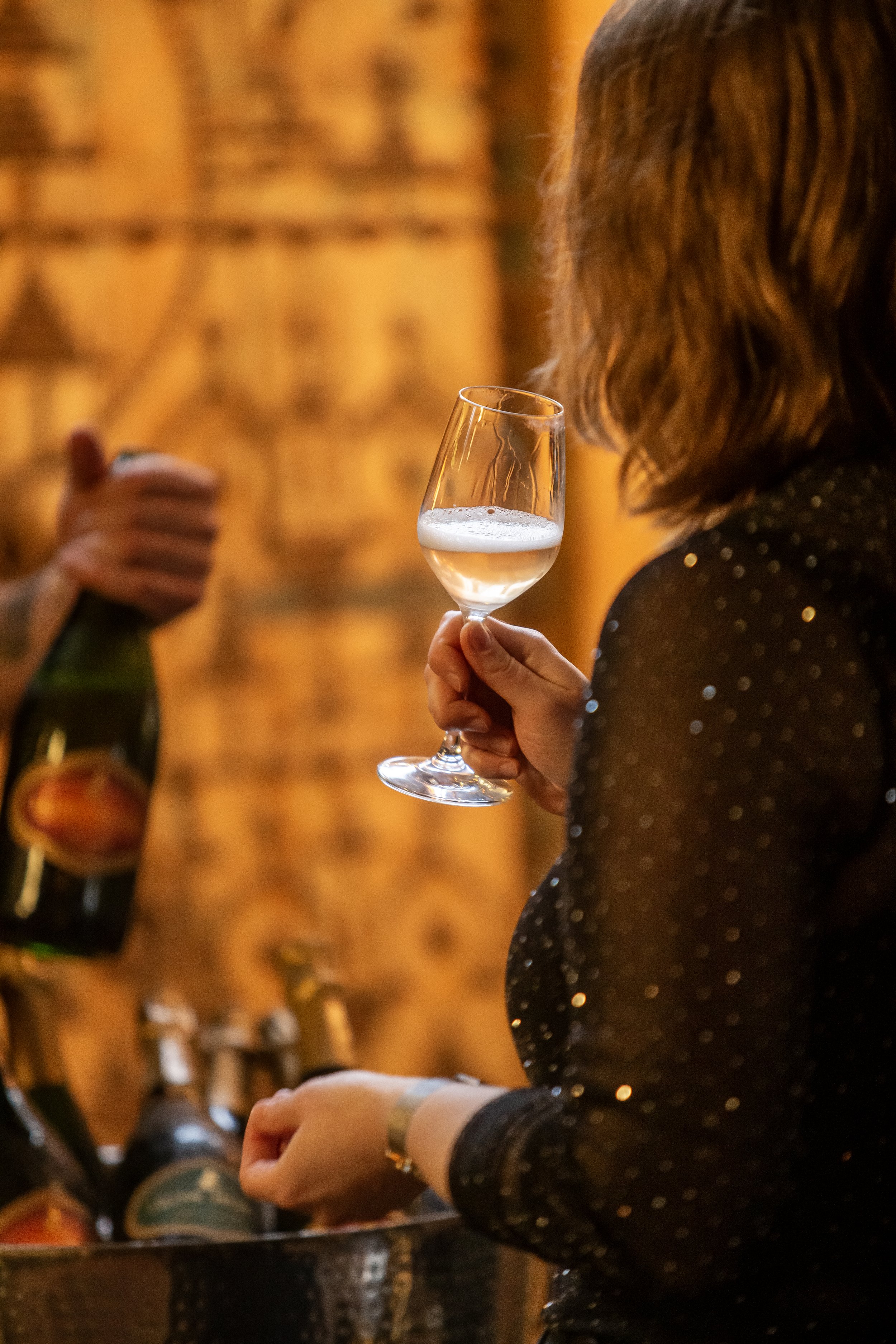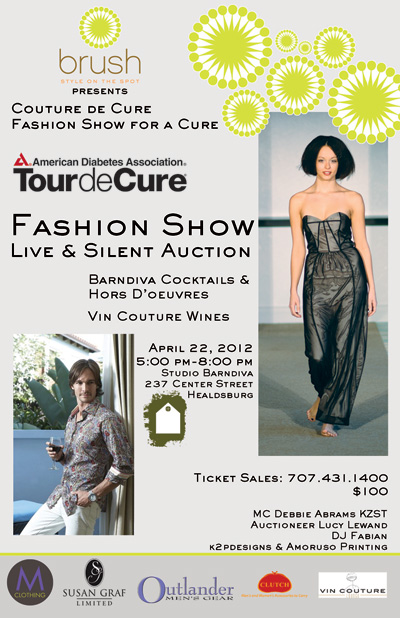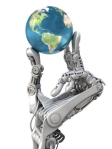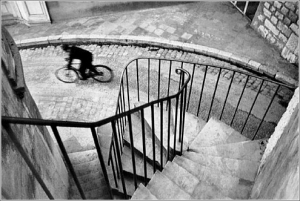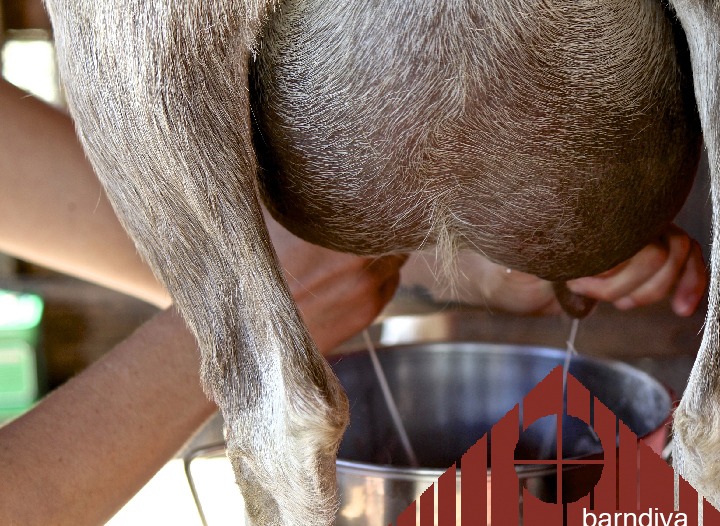
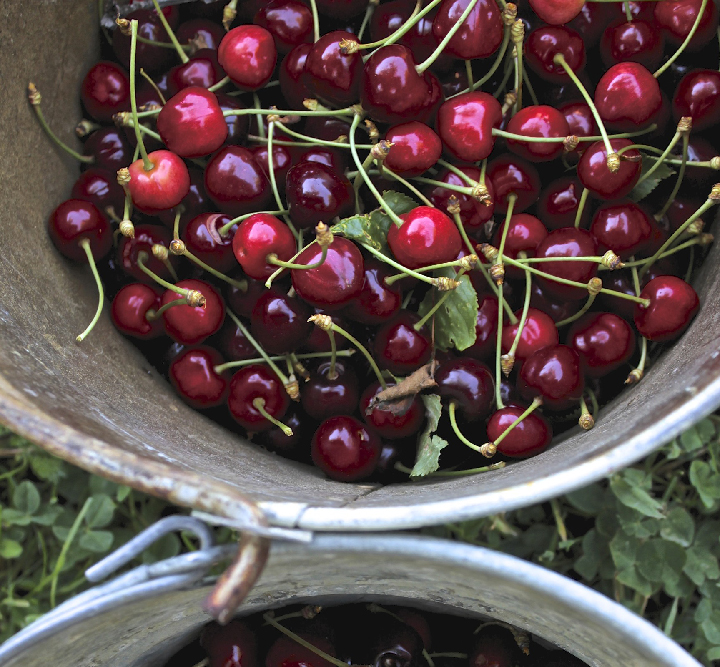
Chef and I have been reading Cooked in tandem for the past few weeks, amazed and grateful that opportunities keep cropping up to take what we love about Michael Pollen's new book directly onto Barndiva’s menu. Case in point: a few weeks back, after salivating over his description of slow roasted pork (“an irreducible packet of salt, fat and wood smoke… with the occasional mahogany shard of crackling”), I was contemplating an acre of scrub Oak and Madrone we’d just cleared from the upper ridge when David Pronsalino, our forester at the farm for the past 35 years quipped, “You could chip it all ...or you could have a lifetime of wood fired BBQ.” The following Wednesday, at lunch with Mimi and Peter Buckley at their beautiful Front Porch Farm, we got to talking about Peter’s passion project in Yorkville where he is breeding pure bred Italian Cinta Senese ~ the ultimate salumi pig. Which, as it turns out, is also delicious slow roasted. Over wood. Bingo.
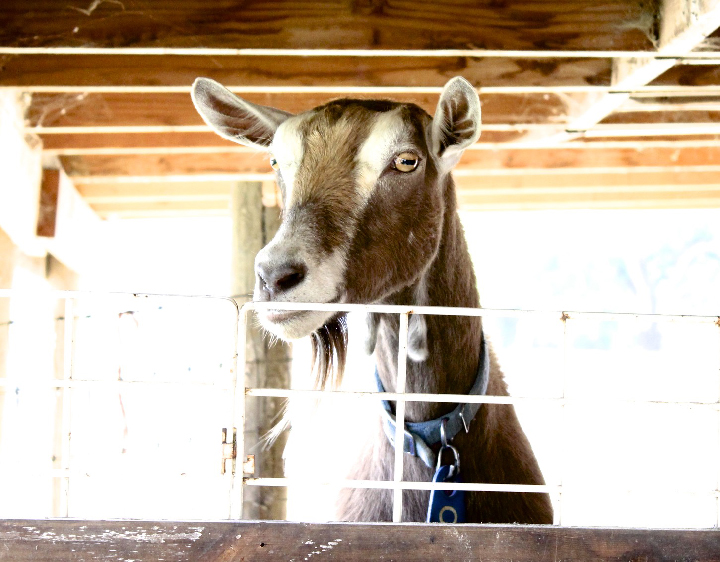
In the last section of Cooked, on fermentation, Pollen makes the point that in our 20th century haste to eradicate all bacteria from our food, American producers missed the fact (by accident or design) that, er, actually not all bacteria are bad. Many in fact, like those found in raw and fermented products are very, very good, especially when it comes to bolstering our increasingly beleaguered immune systems. Chef was ahead of me on this one. When the engaging Hannah Paquette from Wyeth Acres showed up at our kitchen door with fresh goat milk he wasted no time asking Octavio to produce a batch of ice cream with it. Diners have been loving it and after one bite I could see why ~ the taste is fresh and clean with the slightest hint of a welcome acidity, like alpine snow that still carries the herbal memory of Spring.

I like goats because they are so light on the land, the meat is lean, the milk nutrient dense, packed with calcium and minerals ~ especially the important antioxidant selenium. What I didn't know before I met Hannah was that absent the protein aggllutinin, the fat globules in goat's milk do not cluster together like cow's milk which makes it easier for the body to digest ~ better tolerated by folks with lactose sensitivity. Goat’s milk is rich in oligosaccharides (in an amount similar to human milk) which acts as a prebiotic in helping maintain the health of the digestive tract by encouraging the growth of valuable gut bacteria.
One of the things I love most about Healdsburg is that you can drive a few blocks from downtown and find an enterprise like Wyeth Acres where they produce goats milk and sell eggs. Lots of them. And that’s not all they do ~ Rian Rinn and Jenine Alexander, Wyeth Acres owners, just opened the Sonoma Meat Company in Santa Rosa, where the enterprising Hannah also works in addition to her feeding, milking, egg polishing and bottle washing duties at Wyeth Acres. CSA's get most of the milk, but Wyeth Acres eggs and Sonoma Meat Company bacon and sausages can be found at the Healdsburg Farmers Market every Saturday.
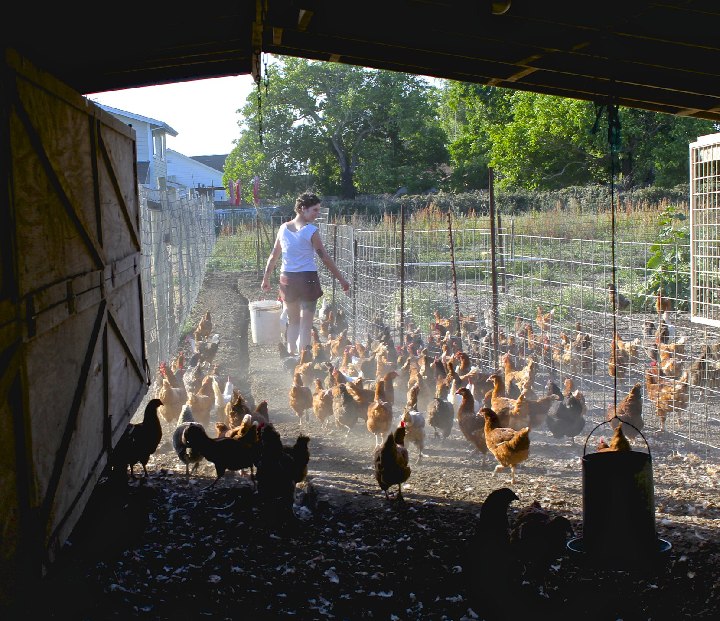
I had a great time with Hannah ~ though I bombed at milking. I’m not at all squeamish but for the life of me I couldn’t get the right hold on that docile animal's teat and get more than a few squirts out of it. Hannah, on the other hand, is a natural. She has an ease around the animals at Wyeth Acres (besides the pure bred Toggenburg and Saanen and American Lamancha mixed breed goats there are dozens of chicks and hens, a sheep and a few mismatched dogs) that you’d guess came from years of working on a farm. Not so. She fell into goatlove when she and her sweetheart were asked to babysit for Rian and Jenine one winter while they traveled. Her previous experience with goats had come from run-ins with Billy goats, by nature irascible and menacing to whatever strikes their fancy. Working with the females she found a simpatico nature, a lean supple beauty in the way they looked and moved, a subtle intelligence that gave up a perfect product through a delivery system that was almost as easy to access (except for me apparently) as turning on a tap. Hannah, the epitome of girl power in a rapidly changing world starving for relevance, knew she’d found kindred spirits.
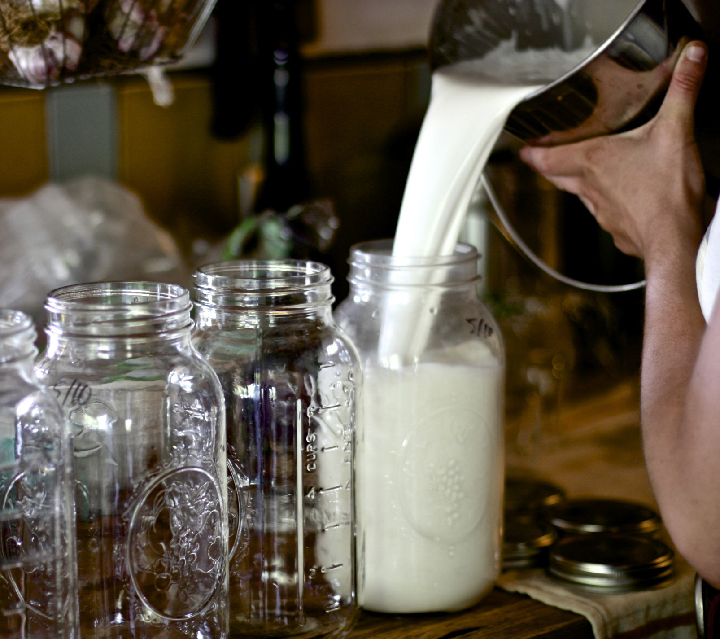
The goats jump up and down from the milking platform with alacrity, munching from a bucket of oats and molasses while being milked (their main diet is alfalfa). Two goats fill a bucket with gorgeous white foaming milk, which Hannah filters through stainless steel, then pours into sparkling clean glass bottles. The milk we use to make our ice cream is but a few hours old. Take it from a city born girl who has walked a bumpy road toward understanding what a healthy relationship to land and animal should look and taste like: this is as good as it gets.
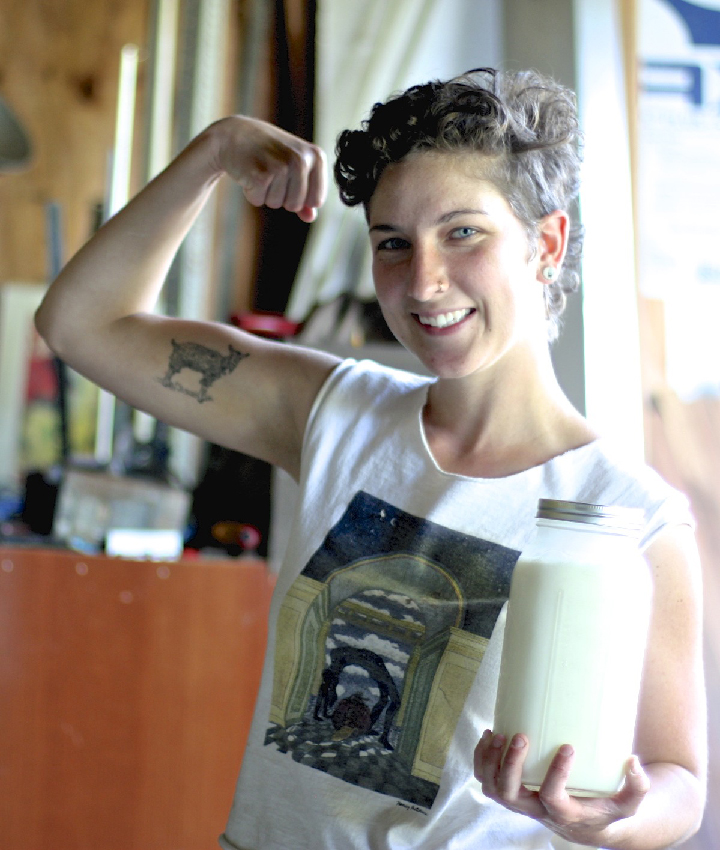
We are serving Wyeth Acres Vanilla Bean Goat Milk Ice Cream with Barndiva Farm cherries and delicate honey almond pralines this week ~ and while we’ll swap the fruit in the coming month as summer comes into its own, we’ll try to keep it on the menu as long as Hannah and the goats oblige. Enjoy.
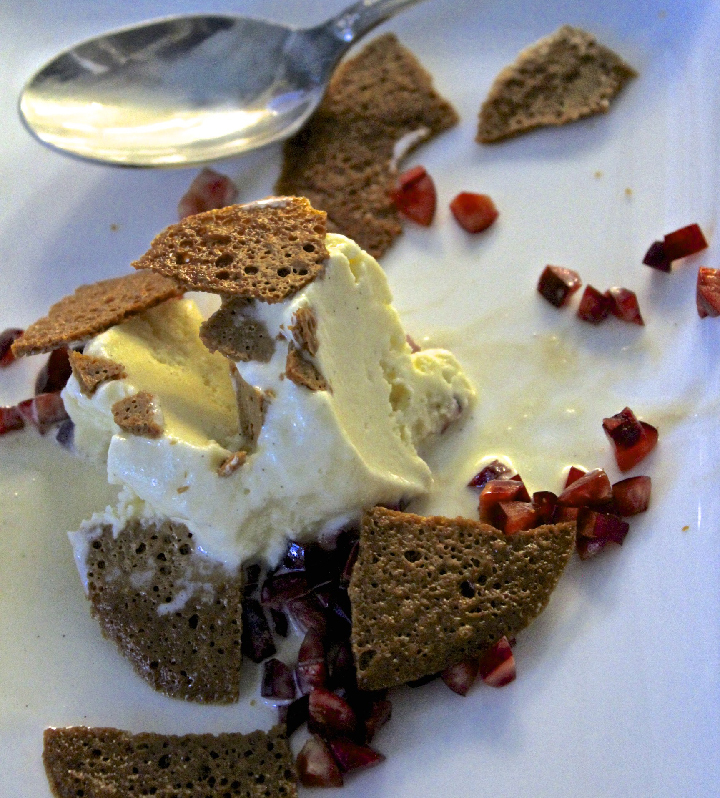
LEARN MORE: The life changing book Nourishing Traditions should have a place on your book shelf ~ what I didn't know until Hannah told me was that its author, Sally Fallon Morell, is also the driving force behind A Campaign for Real Milk. The indefatigable Morell has some profoundly important things to say about food (this campaign is about more than milk) that you owe to your yourself (especially if you have young children) to hear. A Campaign for Real Milk and videos of Morell can be found online. Closer to home, Shed in Healdsburg is a great proponent of delicious ways to incorporate raw and fermented things into a probiotic lifestyle ~ with delicious kombuchas and shrubs they serve by the glass, fermenting kits and the occasional class upstairs.
links to: Wyeth AcresSonoma Meat CompanyReal MilkFront Porch Farm Shed

